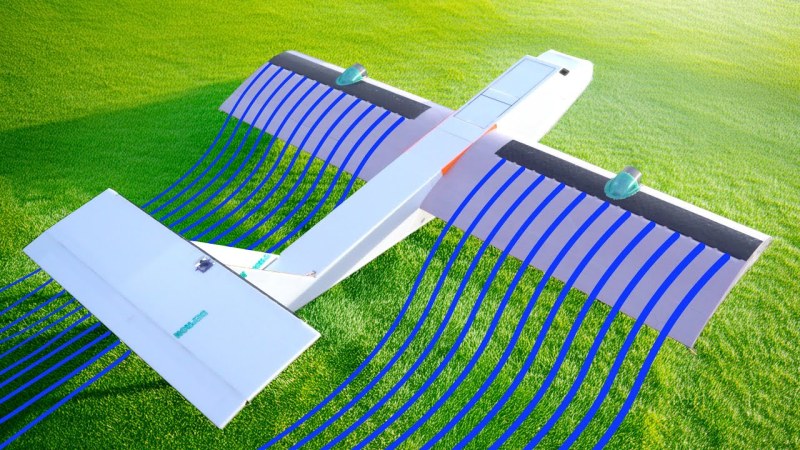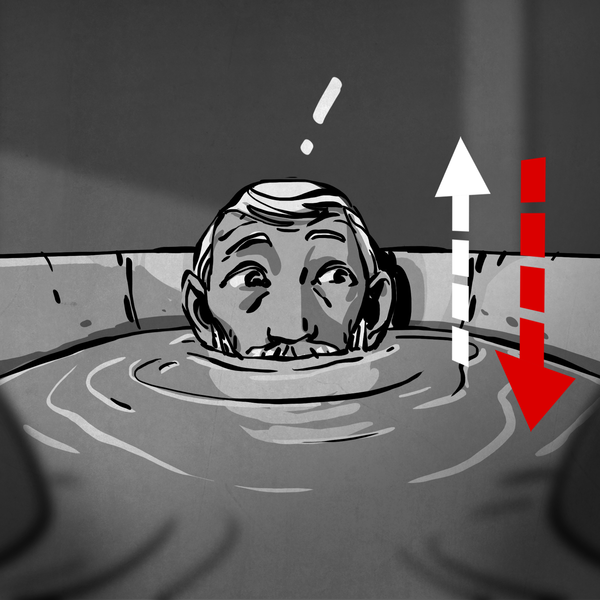The key to Short Takeoff and Landing (STOL) operations is the ability to fly slow– really slow. That’s how you get up fast without a long takeoff roll to build up speed. Usually, this involves layers of large flaps and/or leading edge slats, but [rctestflight] on YouTube decided he wanted to take a more active approach with a fully blown wing.
The airplane in question is R/C, of course, and good thing: these wings would be a safety nightmare for a manned aircraft. With a blown wing, air is blown out of a slot on the top end of the wing, producing a high-speed, high-pressure zone that keeps the wing flying when it would otherwise be completely stalled out. As long as everything works, that’s great! If an engine fails, well, suddenly you aren’t flying anymore — and you’re going too slow to glide. It ends badly.
[rctestflight] doesn’t have to worry about that, though, because this foamboard and pink styro R/C aircraft carries nothing that can’t survive a crash. (A couple of electric ducted fans (EDCs), an Ardupilot, a radio, and a battery are all pretty shock-resistant.) The EDCs sit midway down the chord of the wings, and blow air into a plenum carved into the foam. On each wing, the exhaust from the fans is driven rearward from a slot created by a piece of carbon fiber. This air serves not only as a lift-enhancement but also as the plane’s sole propulsion and a component of its control system.
Propulsion makes sense: all that air washing back of the wing was bound to create thrust, but control? Well, if you run the EDCs at different speeds, you’re going to create a different amount of thrust on each side of the aircraft. Differential thrust on a twin-engined aircraft can usually control yaw, but on this plane, it will also speak to roll as the wing with more thrust will experience greater lift, causing that wing to rise and forcing the other to drop. It’s an interesting control scheme, but ultimately [rctestflight] decided he did not trust it enough not to add in ailerons.
The blown wing does work, however, with the plane having a very, very impressively short takeoff distance– doubly so for a seaplane. We shouldn’t be surprised, though. [rctestflight] has been at this a long time; we’ve seen everything from human-carrying hydrofoils to a series of solar soarers, to a 3D-printed rover-tank from the prolific YouTuber.
We still wouldn’t ride in it, though.
















Similar in concept to FanWing and Flettner wing aircraft. Interesting!
Those are wild, they remind me of all the flying machine contraptions people tried to invent before the Wright brothers finally figured out a way that works. But apparently these can actually fly.
At the usual RC plane scale you have enough power to make a pizza box fly. It has nothing to do with clever contraptions and concepts. You just point the airflow downwards by any means and give it some welly.
“…this involves layers of large flaps and/or leading edge slots…”
They’re called—and the technical term is—‘slats’—-‘SLATS‘.
Well not to be pedantic but you can do STOL with slots instead. For example the Stinson 108 has a leading edge slot. Slats general refers to movable front control surfaces like those on the Helio Currier or can be used interchangeably with slots where there is a fixed leading edge surface like on the zenith 701.
Slots and slats are different things but both try to achieve the same effect. I would generalize by saying movable slats are found on airframes where you have a large change in flight profile.
That one was a typo and has now been fixed, thanks.
Huh. I thought those were just fixed slats. Learned something, thanks!
cough I mean, that’s totally what I was referring too. Yeseriee, I’v never mad atypo in my lfe.
When one wing rises nd the other drops, that is not “pitch”, it is “roll”.
This one was an embarrassing brain fart, which has now been fixed.
It’s just another example of the scaling law in action with RC planes, where the power-to-weight and power-to-drag ratio improves drastically as you scale things down, to the point that you can make a split log fly by sheer thrust.
haha i am once again crusading against overuse of the word “just” because, if that one word is removed, i 100% agree
on those terms, i rather liked it because pondering slow model airplanes is a hobby of mine
“The top end of the wing” Hmm. Which is that, the left or the middle?
I would love to see a redesign of the wing without the sharp corners and 90° turns in the flow path… but then we’d end up with tangential fan airplanes? Search brings up some wild stuff:
https://www.secretprojects.co.uk/threads/fan-wing-aircraft.4458/
90 degree turns in flow path are typically used to balance flow into many outlets.
how about moving the CoG by moving battery pack forward when the angle of attack gets larger ?
should be possible purely mechanical using the angle of attack servo mechanism.
The channel’s real treasure is in its design/fabrication/analysis shortcuts – something about actually creating a prototype in a short period rather than just getting mired in the details.
As far as a blown-wing seaplane goes, have a look at the JDF ShinMaywa US-2 – four turboprops and a central turboshaft blowing air out of wing slots. Pretty impressive but this is the least annoying video I could find of a takeoff.
https://youtu.be/t4iRXMOMm9M&t=53
Blown wings and blown flaps are certainly a significant safety risk on piloted aircraft. They’re rarely justified since they have very niche use cases and presumably add a lot to manufacturing cost, complexity, and maintenance requirements. I wouldn’t go so far as to say they’re a “safety nightmare”, though. If they fail when you’re too close to the ground to recover from a stall, that is indeed likely to end badly – but so is an engine failure on a helicopter if the pilot is on the wrong side of the h/v curve, and that doesn’t stop people from using helicopters.
It does me!
… well, that an the fact I can’t afford a helicopter.
I’ve never heard of sour grapes, why do you ask?
It’s not TV. You can go forward and backwards to skip parts or repeat parts. You can also change the playback speed.